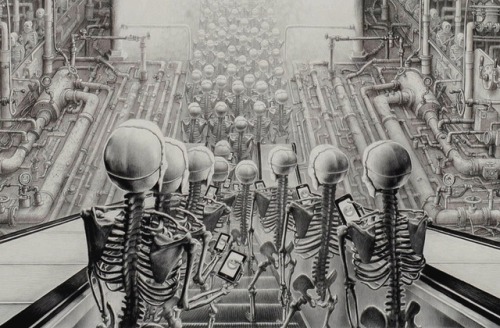

According to these strictly hallucinatory accounts, the whole of the Red Tower, as the factory was known, had always been subject to fadings at certain times. The machinery, which densely occupied the three floors of the factory as well as considerable space beneath it, is said to have evaporated - I repeat, evaporated-soon after the factory ceased operation, leaving behind only a few spectral outlines of deep vats and tanks, twisting tubes and funnels, harshly grinding gears and levers, giant belts and wheels that could be most clearly seen at twilight - and later, not at all. Each of the three enormous stories that stood above the ground level was vacant of all but dust and silence. The factory had long been in ruins, its innumerable bricks worn and crumbling, its many windows shattered. But of course that revelation in its turn also became a source for my truly degenerate sense of amazement, my decayed fascination. It was almost with regret that I ultimately learned about the factory’s subterranean access. The phenomenon of a large factory so closed off from the outside world was a point of extreme fascination to me. The reason for this was simple: no doors had been built into the factory, no loading docks or entranceways allowed penetration of the outer walls of the structure, which was solid brick on all four sides without even a single window below the level of the second floor. If there had ever been such a road it would have been rendered useless as soon as it arrived at one of the four, red-bricked sides of the factory, even in the days when the facility was in full operation. No road led to the factory, nor were there any traces of one that might have led to it at some time in the distant past. Although somewhat imposing on its own terms, it occupied only the most unobtrusive place within the gray emptiness of its surroundings, its presence serving as a mere accent upon a desolate horizon.

The ruined factory stood three stories high in an otherwise featureless landscape. Also check out our interview with Ligotti about weird fiction. - Ann & Jeff VanderMeer This classic story is one of Thomas Ligotti’s most famous, and we’re delighted the author has permitted us to present it to you here at WFR.com. New original art to accompany “The Red Tower” by Aeron Alfrey: “Hyper Organism”


 0 kommentar(er)
0 kommentar(er)
